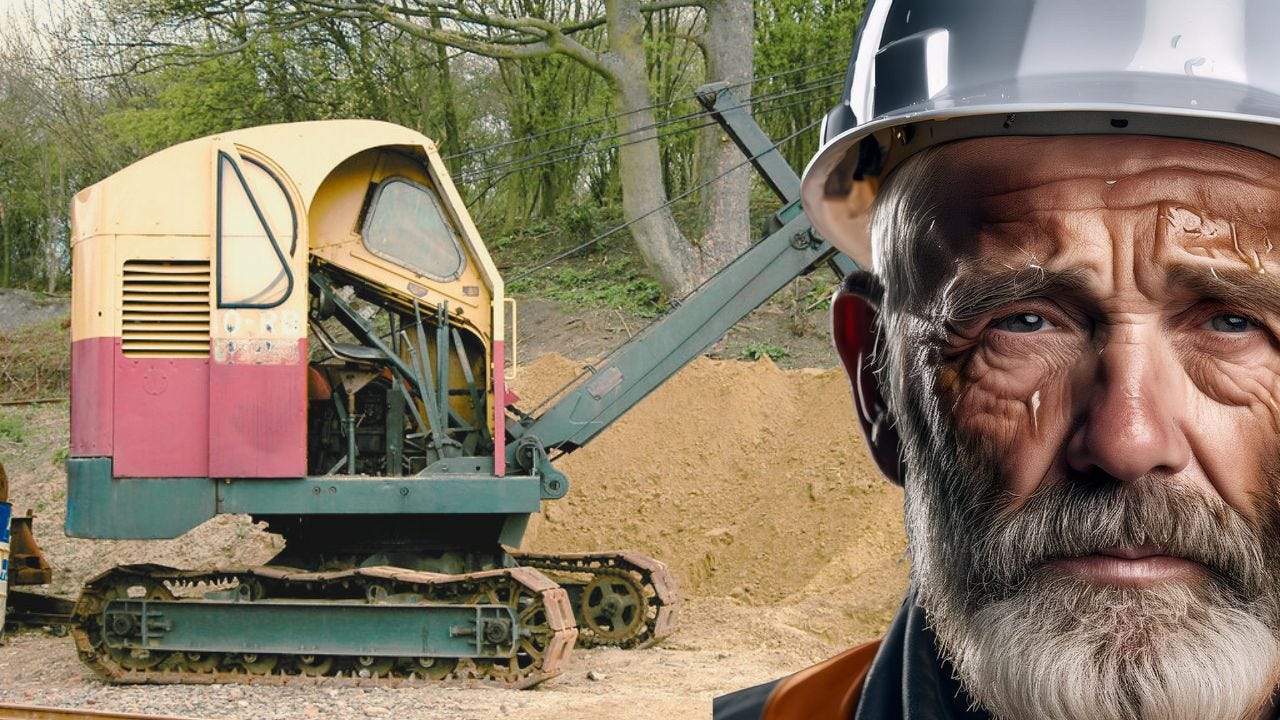They don't make them like that any more
Why do we have such a fondness for the machines of years gone by?
Nostalgia is a powerful force. It’s a bridge between the past and the present, a way to connect with memories that evoke a sense of comfort, pride, and even longing.
In the construction equipment industry, nostalgia runs deep, particularly when it comes to brands like Hymac, O&K, Priestman, Ruston-Bucyrus and a whole host of others. These names are more than just companies that manufactured machinery; they represent a golden era in construction, a time when the equipment was built to last, when engineering was as much about craftsmanship as it was about functionality.
For many industry veterans, the mention of Hymac conjures up images of rugged, dependable machines that were the backbone of countless construction projects.
With its iconic yellow livery, Hymac was a staple on construction sites throughout the UK and beyond. The company’s hydraulic excavators were renowned for their reliability and ease of use, making them a favourite among operators. For those who spent time in the cab of a Hymac, the brand is more than just a memory; it’s a symbol of a time gone by.
Similarly, O&K holds a special place in the hearts of many in the industry. Known for their robust and innovative designs, O&K machines were synonymous with quality. The company was a pioneer in the development of large-scale mining equipment, and their excavators and dump trucks were a common sight in quarries and construction sites around the world. The sight of an O&K excavator, with its distinctive red and white colour scheme, is enough to bring a smile to the face of anyone who remembers the brand’s heyday.
Likewise, Priestman is a name that evokes a strong sense of nostalgia. Founded in the 19th century, the company was a pioneer in the production of cranes and excavators. Priestman machines were known for their durability and versatility, making them a popular choice for a wide range of construction tasks. The company’s “Tiger” and “Panther” models, in particular, are fondly remembered by those who operated them.
Ruston-Bucyrus is another brand that stirs up feelings of nostalgia. The company was a major player in the production of excavators and draglines.
Ruston-Bucyrus machines - affectionately known as RBs - were a common sight on large-scale demolition and construction projects, and their distinctive design made them instantly recognisable. It is little wonder that they are now seen as collector’s items.
So why do these brands elicit such strong feelings of nostalgia?
Part of the reason is that they represent a different era in the construction industry.
During the time when these brands were at their peak, the industry was less driven by technology and more by the skill of the operator. Machines like those made by Hymac, O&K, Priestman, and Ruston-Bucyrus were not just tools; they were extensions of the operator’s skill and experience. Operating one of these machines required a deep understanding of its mechanics, a level of expertise that is perhaps less emphasised in today’s more automated world.
The machines from these brands were built to last, and in many cases, they did last for decades. This longevity is a testament to the quality of their design and construction, and it’s something that many in the industry look back on with fondness. And, while I realise it is probably just sentimentality talking, these old machines seem to have had a character; a personality that modern, more high-tech machines just lack.
But what about those modern brands? Do they elicit the same level of nostalgia.
It’s a difficult question to answer. In some ways, modern brands like Caterpillar, Komatsu, and Volvo are continuing the legacy of those older brands, building machines that are powerful, reliable, and built to last.
However, the industry has changed, and with it, the relationship between operators and their machines.
Today, construction equipment is often seen as more of a commodity than the result of a craft. The rise of technology has brought with it a level of automation and standardisation that was unheard of in the days of Hymac and O&K. Machines today are equipped with GPS, telematics, and other advanced systems that make them easier to operate but perhaps less personal.
That’s not to say that modern brands won’t be looked back on with nostalgia in the future.
There’s a good chance that in 20 or 30 years, industry veterans will look back on today’s machines with the same fondness that they currently reserve for brands like Priestman and Ruston-Bucyrus.
However, the nature of that nostalgia may be different. Instead of remembering the feel of a well-worn lever or the sound of a chugging engine, they might reminisce about the precision of GPS-guided equipment or the efficiency of hybrid power systems.
In the end, nostalgia is as much about the memories we associate with a particular brand or machine as it is about the machine itself. For those who grew up in the industry during the heyday of Hymac, O&K, Priestman, and Ruston-Bucyrus, those brands will always hold a special place in their hearts.
They represent a time when the industry was different, when the relationship between man and machine was more personal and more hands-on. And while the industry may have changed, the memories of those brands, and the pride that comes with having worked with them, will endure.
So, while modern brands might not yet inspire the same level of nostalgia, they are building the foundations for future generations.
The machines of today will become the classics of tomorrow, and the operators of today will someday look back on them with the same fondness and pride that we now reserve for the brands of the past.
One day, perhaps today’s operators will look back at the machines of now and reminisce – They don’t make them like that any more.





